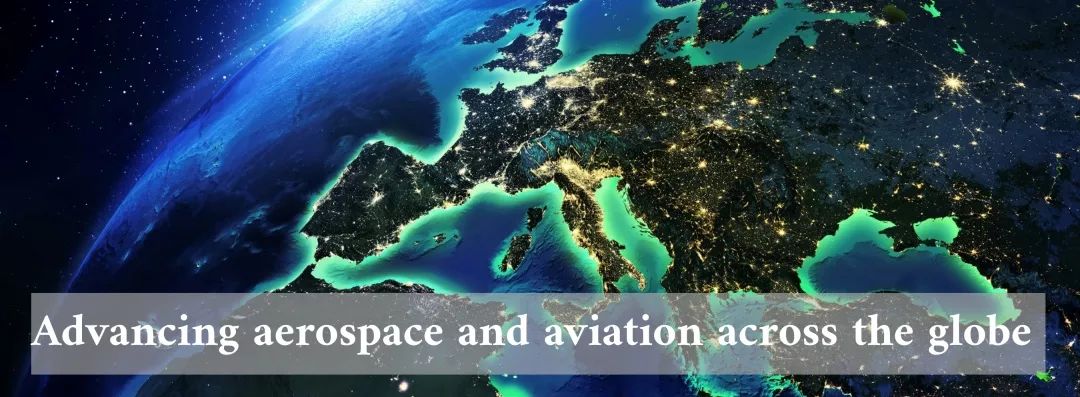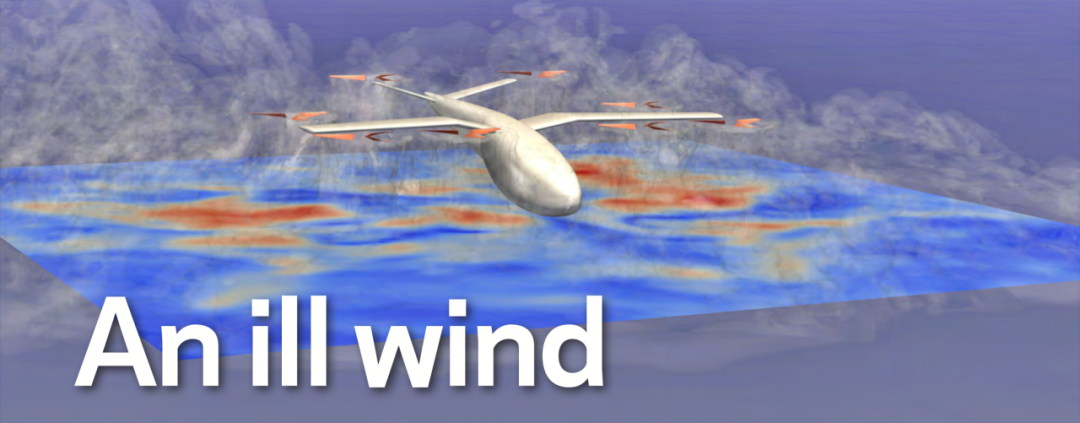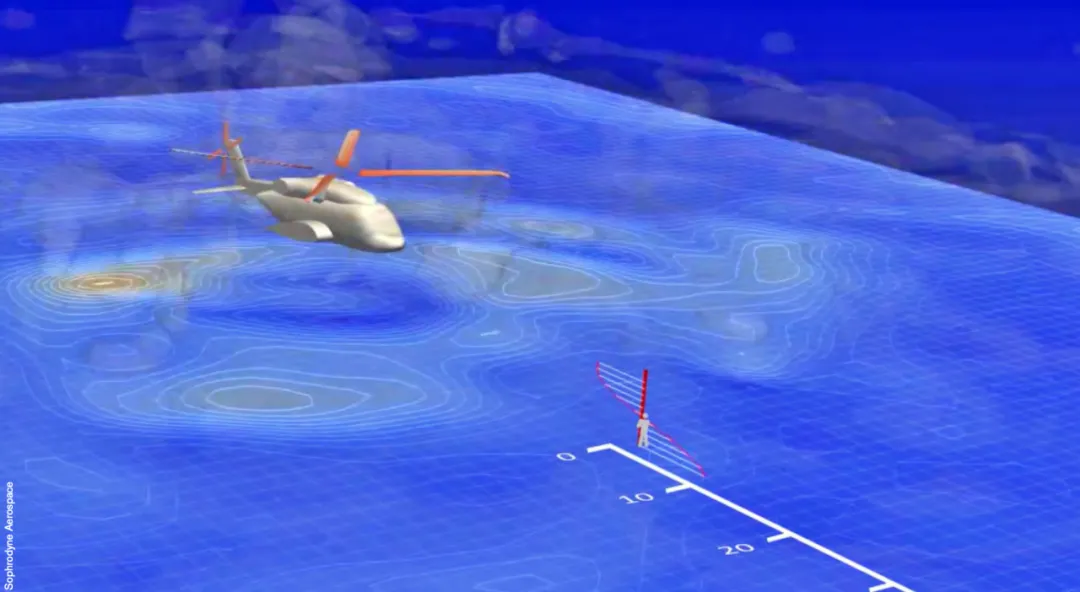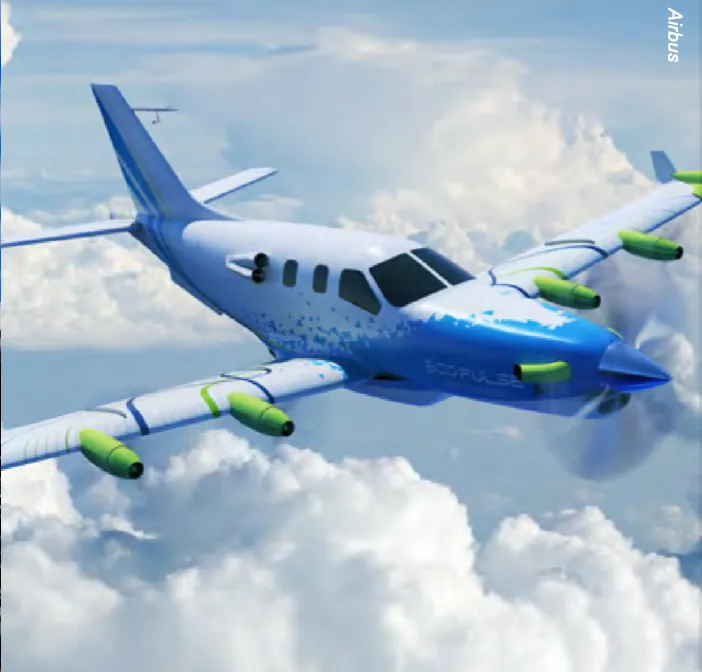Harmful wind? The role and impact of downwash on helicopters and eVTOLs

Advanced computer modelling techniques have enabled accurate predictions of rotor downwash and outwash to be made for the first time, explain Mike Pryce of the UK CAA and Richard Brown of Sophrodyne Aerospace.
“We wanted flying cars, we got 140 characters.” That was the headline of a 2011 manifesto for the future by Founders Fund, which backed Facebook and SpaceX. It’s fun to tinker with apps on your phone, but do they really matter? Elon Musk, Jeff Bezos and Larry Page all made their fortunes in online tech and are now investing their fortunes into innovating in flight. Is aviation more challenging than digital tech?
From Star Wars to The Jetsons, the coolest flying machines take off and land vertically. However, making an aircraft hover is much more difficult than landing a rocket tail-first as it falls from space, as cool as that looks. Another great dream of Elon Musk that has yet to be realized is to build a supersonic, electric, vertical take-off and landing jet.

The downwash of an eVTOL is more complex and less predictable than that of a traditional helicopter due to higher disc loadings and multiple rotor interactions.
Of course, there are existing aircraft that can hover all the time. Helicopters do this by flying without wings. They fly in a “hover mode,” moving forward supported by spinning rotors. However, helicopters pay a price for their rotors. They are noisy and have limited appeal to passengers, due to their limited speed, altitude and range. These run counter to the innovator’s dream, the idea of electric flying taxis that Founders Fund’s Peter Thiel is obsessed with.
Over the past few years, eVTOL aircraft have received billions of dollars in investment. The renderings are futuristic, the flight tests are inspiring, and The Jetsons seems within reach—but there’s one thing no one has innovated: air.
Born from a gust
A gust of wind
A few years ago, I was taking my kids to an activity on a Saturday morning and I did the “stop, look, listen” maneuver before crossing a busy road. Suddenly, I was hit by a double-decker bus passing in the opposite direction. The culprit was turbulence.
It was a breezy day, not quite a hurricane, but a sudden gust of wind between two office buildings was strong enough to blow me off the road. I had just started a project to study the effects of downwash and upwash on electric vertical take-off and landing (eVTOL) aircraft. This was after a tragic accident in the UK, when a helicopter landed on the tarmac in a hospital car park, killing an unrelated person on the ground. The UK Civil Aviation Authority wanted to know if eVTOLs would pose similar risks?
What goes up...
Rising Things

In some cases, the rotor downwash from the helicopter ahead can blow you over from behind, as shown in this VTM chart.
If you want to get a helicopter or flying taxi airborne, you need the downward push of air. Isaac Newton knew this, and a lot of research has been done on this, much of it at NASA’s facility at the end of Silicon Valley. Yet, while there are plenty of free PDFs online showing test data from various VTOL aircraft, there is no clear science to explain the physics behind it. How downwash (the air pushed down by a helicopter or electric VTOL aircraft) actually works has always been a mystery, answered in practice only by “rules of thumb” derived from basic theory.
Likewise, the mystery is heightened when downwash hits the ground and flows out. The rule of thumb for staying safe around downwash is based on knocking down a fit, well-trained U.S. Marine, not a hospital visitor in a parking lot. The question is: How do we keep everyone safe?
Empirical data is useful and allows for some basic predictions about alluvial deposits, but modern innovators need to think beyond that. They like to understand things from first principles, with a grasp of the underlying physics. So we decided to do that, too.
One problem is that despite the use of supercomputers by NASA and others, it seems difficult to make airflow predictability digitally. Still, we wanted to see if we could do it by understanding the physics involved and modeling it digitally. While it’s a tall order, our goal is the Jetsons dream of safe flight in the future.
Vorticity Transport Model
Eddy current transport model

A Westland Wasp helicopter lands on a freshly mowed grass runway, vividly demonstrating the rotor downwash effect.
The contractor selected by the CAA, Sophrodyne Aerospace, used a unique computer modelling approach, the Vortex Transfer Model (VTM). It produced results that were more interesting than those from other software codes. In 2023, we published a report, CAP 2576, showing the results of Sophrodyne’s modelling. The computer simulations seemed to show that electric vertical take-off and landing aircraft would produce different airflow impact patterns, which could increase the risk to people on the ground.
The problem of accurately capturing the qualitative and quantitative characteristics of the ground airflow beneath a hovering helicopter or eVTOL is one of the most challenging problems facing aerodynamicists, and this work places higher demands on the data tools they use.
Aerodynamicists are, of course, used to distinguishing between laminar, ordered flow and the chaotic eddies that make up full turbulence. However, the airflow on the ground beneath a rotorcraft is often in a fascinating intermediate state, where the inherent fluid dynamics of the propeller wake have not yet had the time or space to fully transform the rotor airflow from its initial state (consisting primarily of spiraling tip vortices generated by the rotor blades) into the turbulent flow outward over the ground. The airflow in this intermediate region tends to irregularly aggregate into a series of highly concentrated, rapidly rotating, powerful waves. These waves have a gusty, impact-like quality as they flow outward over the ground, and this seems to have the greatest impact on people and objects in the water below the rotorcraft in a hover.
Few numerical methods can simulate this transition from advection to turbulence in airflow robustly and accurately enough to be able to predict the intensity and duration of gusts associated with wave-like vortices. The Vortex Transport Model (VTM) directly computes these dynamic properties while forcing their shape, size, and strength to conform to the basic mathematical equations that govern air as it propagates over the ground.
Both experiments and calculations have shown that the local velocity of the outwash changes on time scales from milliseconds to seconds. While individual rotor aerodynamic calculations may need to capture the flow changes during dozens of rotor revolutions to quantify the performance of the system accurately enough, the VTM framework can simulate hundreds of rotor revolutions and therefore can solve some more difficult problems, such as understanding the continuous evolution of the flow outwash over a long period of time. Therefore, the above experiments and calculations can be used to study and understand the physical mechanisms in more depth. One of the results of Sophrodyne's research is that it shows that the overall characteristics of the outwash change over a much longer time period than previously expected, and the shape of the flow field and its operation are very sensitive to the layout and operation of the aircraft rotor.
Many in the industry believe that the usefulness of numerical analysis lies solely in providing “hard numbers” that can be used in design or to set regulatory limits. However, computer-based simulations, using the Vortex Transport Model (VTM), provide a rich and detailed understanding of fluid mechanics at a fundamental level to produce the physical effects we observe in the outwash beneath real-world rotorcraft.
The purpose of aerodynamic simulation is to provide designers and aircraft operators, as well as managers of facilities where aircraft are operated, with information to create a safe, efficient transportation system that the traveling public can use with confidence. The Flow Transport Model (VTM) provides a large amount of accurate data, but the main advantage of Sophrodyne's numerical methods in the current environment is the ability to provide detailed, understandable and graphical information to help us understand the physics of a very complex real-world problem that may have a significant impact on future aviation safety.
Real-world tests
Real-world testing
Understanding the physics may help find safe solutions, and we hope to validate Sophrodyne's digital work with some real-world tests.
Since there is no public data on electric vertical take-off and landing (eVTOL) aircraft, we turned to helicopters - which have been in use for decades. Understanding the airflow under helicopters will help us validate Sophrodyne's vortex transfer model (VTM) code and may even be of great benefit to helicopter operations. With the help of a helicopter operator and Snowdonia Aerospace, we were positioned underneath a hovering Sikorsky S-92 helicopter to measure the outwash speed of the airflow with an anemometer. We also collected additional data at Silverstone, Europe's busiest heliport, on the day of the British Grand Prix.
We did not share the results of these tests with Sophrodyne. Instead, we provided them with the test conditions and asked them to calculate the speeds the computer predicted we should experience. We then compared the computer's predictions with the conditions we experienced in the real world.
They match perfectly. This strengthens our confidence in previous eVTOL modeling and reveals that the airflow beneath helicopters is more complex than expected. This understanding can help us improve the safety of current flight operations as well as future flying taxis.
The release of real-world test results for eVTOLs by the Federal Aviation Administration (FAA) has given this work a big boost. Digging deeper into the FAA data also seems to agree with our model for 2023. Real-world operation is consistent with model predictions. Kudos to the physics-based approach!
Suddenly, iterative processes that can lead to failure and impede innovation seem unnecessary. We can identify risks before they occur and map out paths to avoid them, eliminating the obstacles that airflow can create in innovation.
This provides strong support and a real opportunity for innovators and regulators to address challenges at the design stage (the cheapest part of the process). It also provides an opportunity to really understand what happened in hospital car parks. Of course, by the time the accident is investigated, all traces of the airflow have long disappeared.
The helicopter testing also led to some surprising findings. We tested with simple handheld anemometers, rather than more complex remote sensor arrays. This meant we experienced the same downwash and upwash as the ground crews.
We found that the washout not only had physical effects, like the gusts that blew me off the road, but also cognitive effects, with simple tasks like reading out numbers becoming much more difficult in the high-speed air. This seemed strange, because the CAA test team included experienced aviation personnel. Then search and rescue personnel confirmed that they had experienced similar things. The actual operation seemed to confirm what we found in the numerical model. Experience confirmed the data, and it also confirmed our views on the physics.
We also discovered that outwash is far from a strong, constant wind. Instead, you feel gusts of wind coming from different directions. The helicopter in front of you might very strangely try to blow you over from behind. Sophrodyne’s model shows this in a powerful visual way, and we think it could help train ground crews and prepare passengers, using short videos that allow them to see the turbulence. A moving picture is worth a thousand words, and this helps convey important safety information. It looks like we’ve found a way to see the complex physics of airflow beneath a helicopter or eVTOL aircraft in full 3D. This will not only help with understanding downwash and outwash, but also with piloting.
Axes of movement
Axis of motion
Airplanes have three axes. The X-axis connects the nose and tail, the Y-axis connects the wingtips, and the Z-axis is vertical. Most aviation knowledge is about the X-axis and the Y-axis, and digital screens have the same axes. Digital technology is a tool that requires you to use it skillfully.
By thinking about this and testing it digitally, you can start to really understand the problem. Sophrodyne's work allows us to actually see the airflow before it acts on people on the ground. Hopefully this will allow regulators and innovators to find better and faster ways to safely take off and land vertically. With our new understanding of the physics of the Z-axis, we may get flying cars faster and safer.
The full UK Civil Aviation Authority report is available at caa.co.uk/CAP3075 and a video of Sophrodyne’s simulation can be viewed at sophrodyne-aerospace.com/resources.
Translation: Liang Hao
Proofreading: Wanqi





